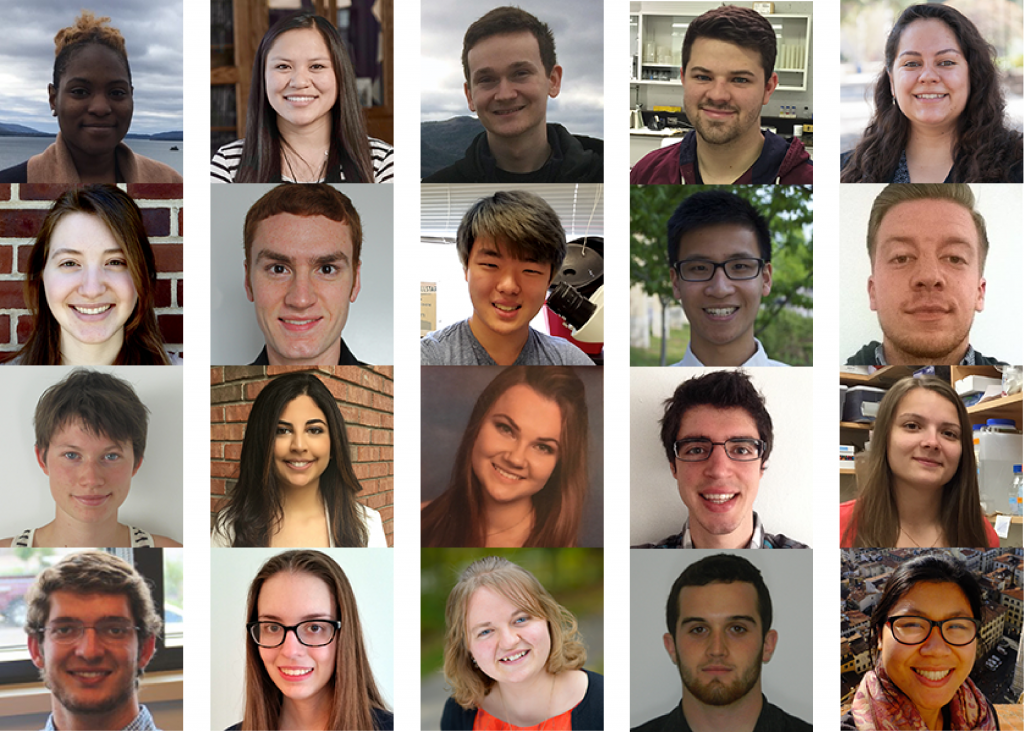To promote excellence in undergraduate research and education, the Genetics Society of America has established a travel award to assist undergraduate members attending a GSA conference and presenting their research.
We’re proud to announce the winners of the Undergraduate Travel Award who will be attending the 21st International C. elegans Conference, which is being held at UCLA this week. These undergraduate students were selected by the GSA Education Committee based on their application and letters of recommendation. We can’t wait to see you at the meeting!

Jacqueline Alexander
Ithaca College
My lab seeks to understand the evolution of dosage compensation between nematode sister species C. elegans and C. briggsae.

Sally Claridge
University of Oregon
Our research seeks to elucidate how gene flow affects the rate of adaptation to novel environments via the experimental evolution of the nematode Caenorhabditis remanei in a chronic heat stress environment.

Dallas Fonseca
Ithaca College
I am studying the specificity of RNAi binding proteins and their role in the development and maintenance of stem cells.

Pierre-Marc Frédérick
Laval University
I work to understand how tiny RNA molecules control cell behavior.

Delfina González
Pomona College
My research focuses on understanding the assembly of a protein complex on the outermost layer of the C. elegans eggshell known as the vitelline layer.

Leah Gulyas
Gettysburg College
I study thermosensation and how stress response genes mediate the C. elegans acute cold shock response.

Mark Hansen
Central Michigan University
We study how stem cell models are able to remain unspecified after long periods of inactivity.

Donghoon Kang
Rice University
I’m studying the effects of P. aeruginosa siderophores on C. elegans mitochondrial health.

Kelvin Liao
Rutgers University
My research uses the model organism C. elegans to determine the molecular function of the sma-10 gene within the context of the transforming growth factor-β-like pathway (TGFβ), a highly conserved signaling pathway essential for regulating cell growth and development in all animal phyla, including humans.

Joseph Marsili
Northeastern Illinois University
My research investigates the potential use of C. elegans as a biosensor, like drug-sniffing dogs, to detect tuberculosis infection in hopes of developing a quick, cost effective tool to provide diagnostic capabilities to those communities currently lacking the resources to fund laboratory diagnostic techniques.

Margaux Quiniou
University of Exeter
I am investigating the ability of cells to undergo direct cell fate conversion in the model organism C. elegans.

Anza Rivzi
Rutgers University
Our study of tbb-6 will further contribute to the scientific knowledge of how mutations in tubulin genes lead to neurodegenerative diseases called tubulinopathies.

Erika Rosenkranse
Marist College
My research investigates ways in which DNA damage is repaired.

Cyrus Ruediger
University of Colorado Berkeley
I study the contribution of the C. elegans kinase kgb-1 to protein folding stress resistance.

Mariya Stefinko
Northeastern Illinois University
I study cell signaling in C. elegans, specifically trying to identify novel components in an EGL-15 Fibroblast Growth Factor Receptor Signaling complex, using genetic and molecular biology methods.

Colson Tomberlin
University of Colorado Boulder
My research is broadly focused on characterizing neurodegenerative disorders with a specific emphasis on Alzheimer’s disease and ALS.

Carolyn Turcotte
Marist College
My research focuses on the genetic basis for DNA repair mechanisms.

Kathryn Weaver
Bethel College
My research uses a health rating scale to determine if C. elegans (a free-living nematode) is a useful model for studying the effectiveness of drugs used to treat soil-transmitted helminths (parasitic worms).

Curtis Wentz
Juniata College
I use the model organism C. elegans to investigate the role of sphingolipids in neurotransmission and aging.

Zoe Yeoh
Gettysburg College
We are looking at the relationship between SKN-1 and FSHR-1 in the C. elegans innate immune response, a broadly conserved defense mechanism inherent to nearly all multicellular organisms.































